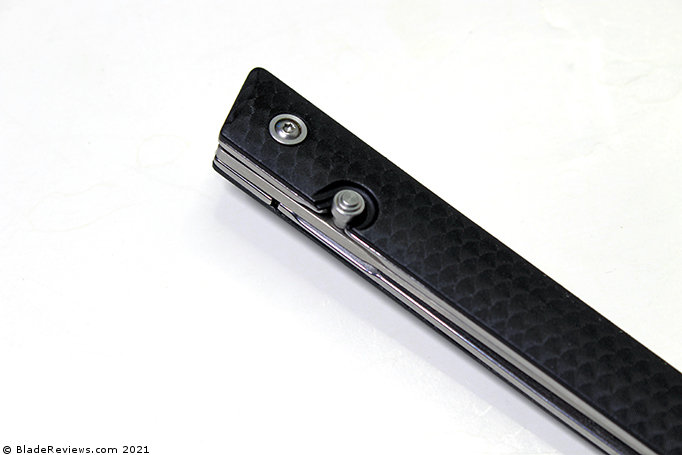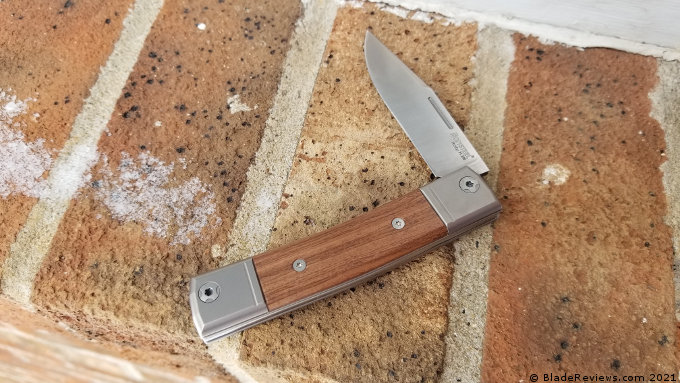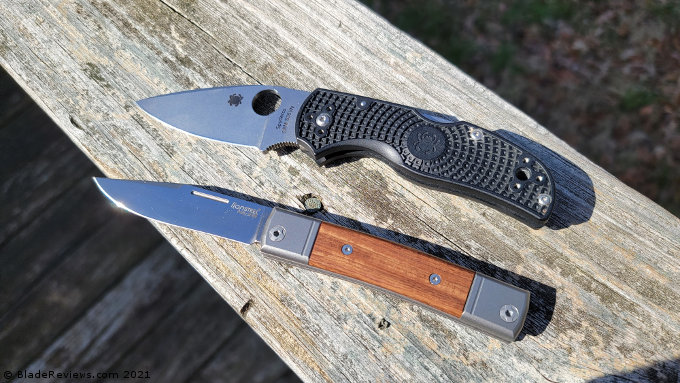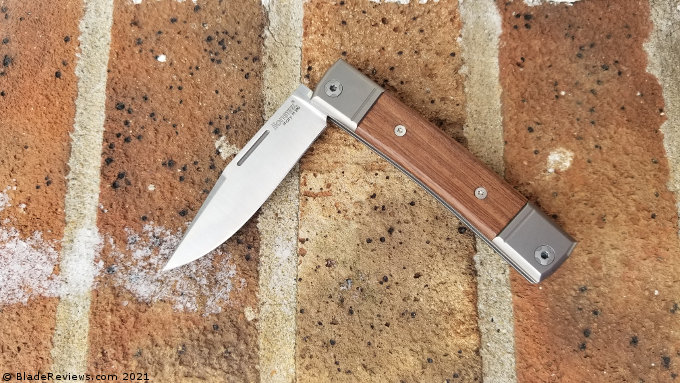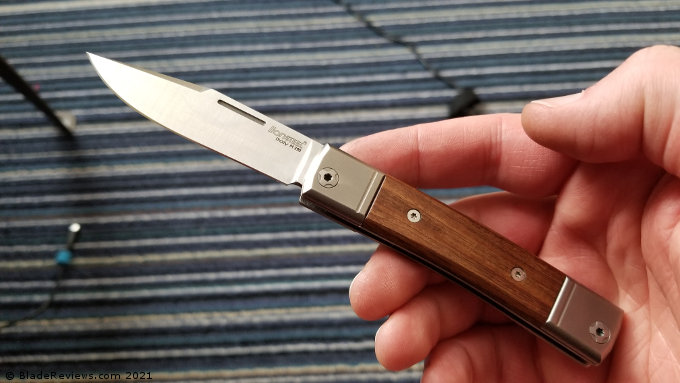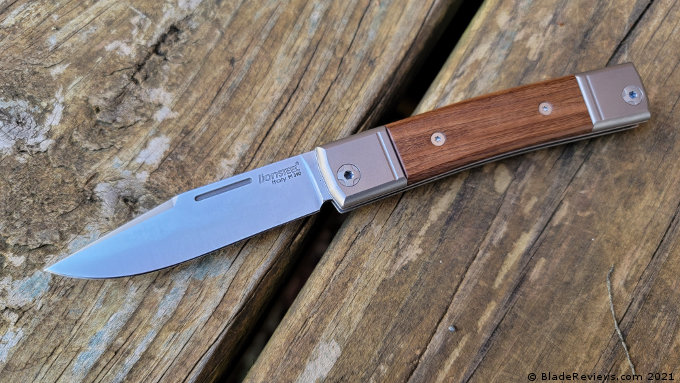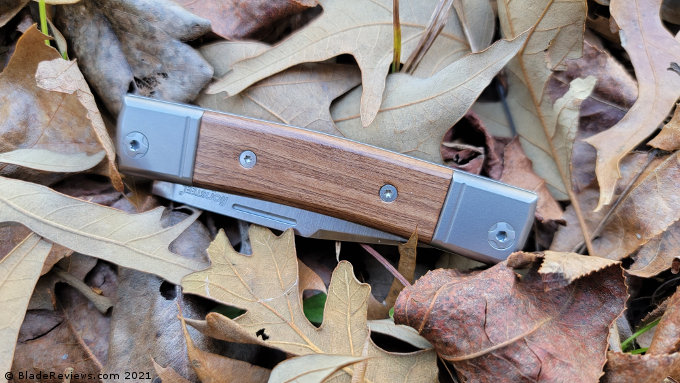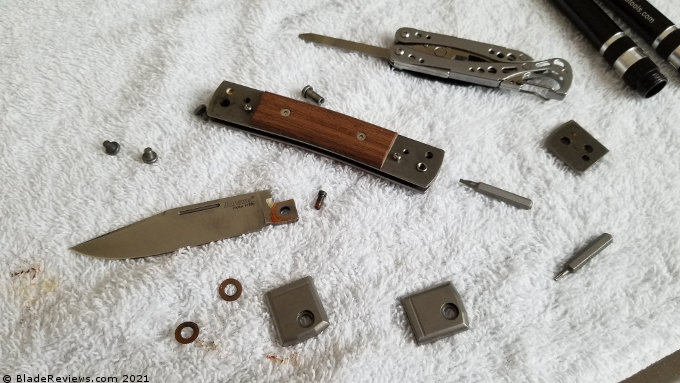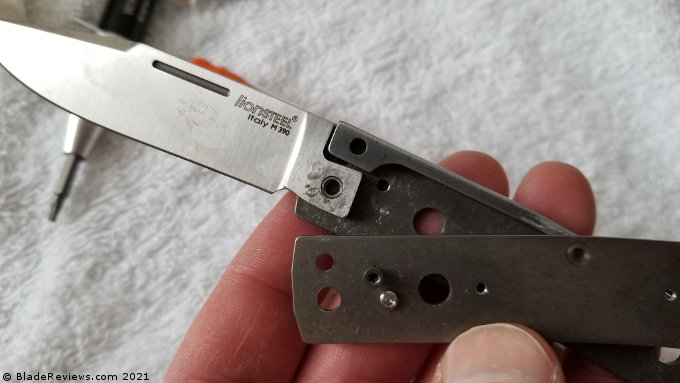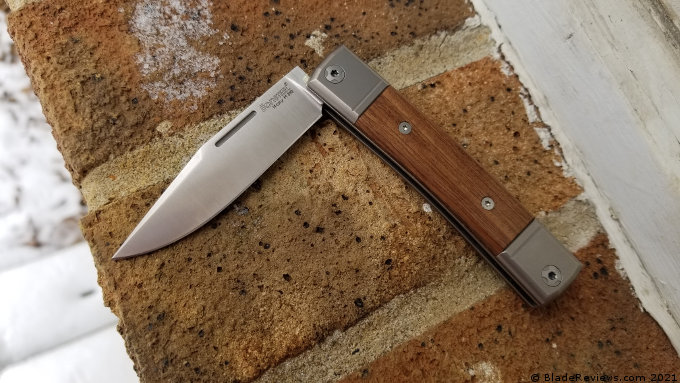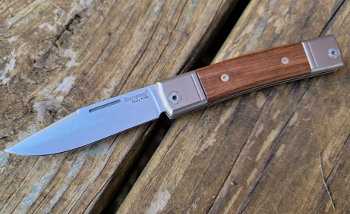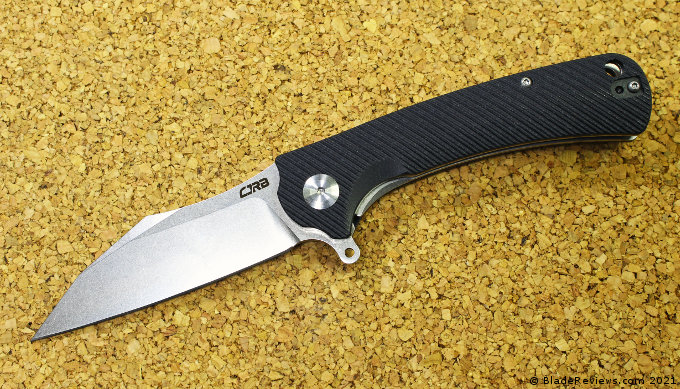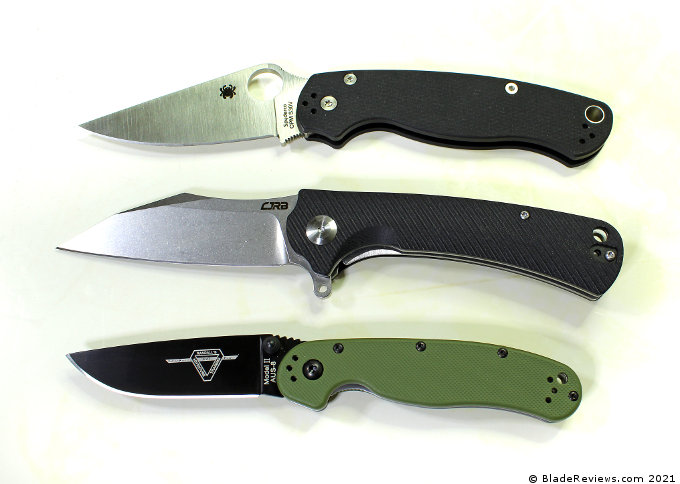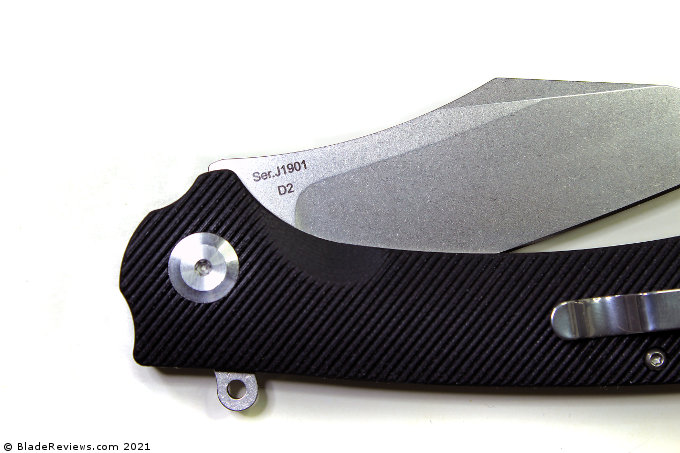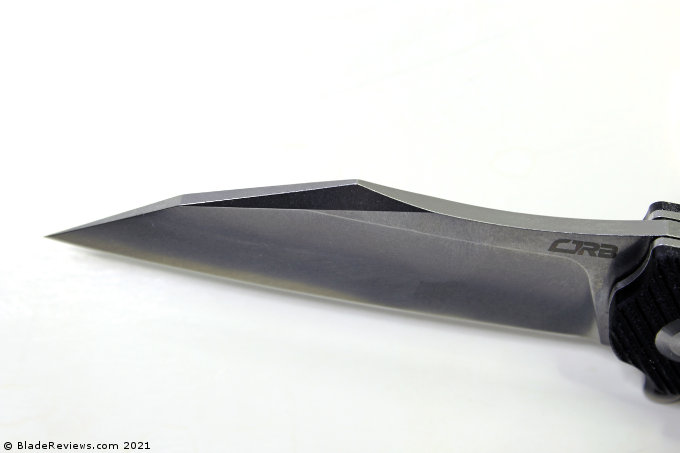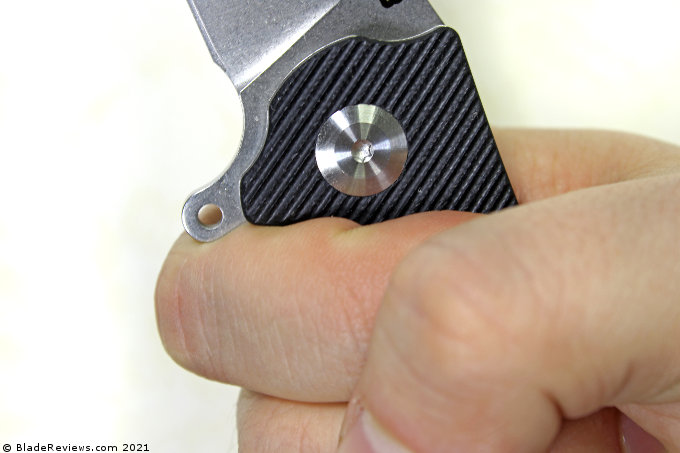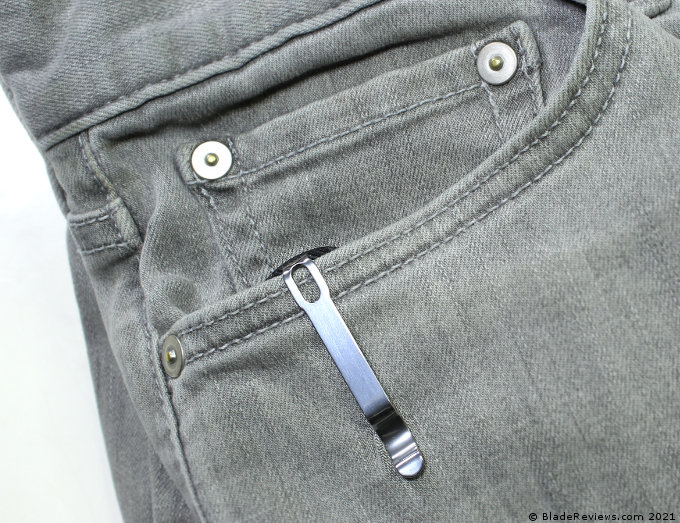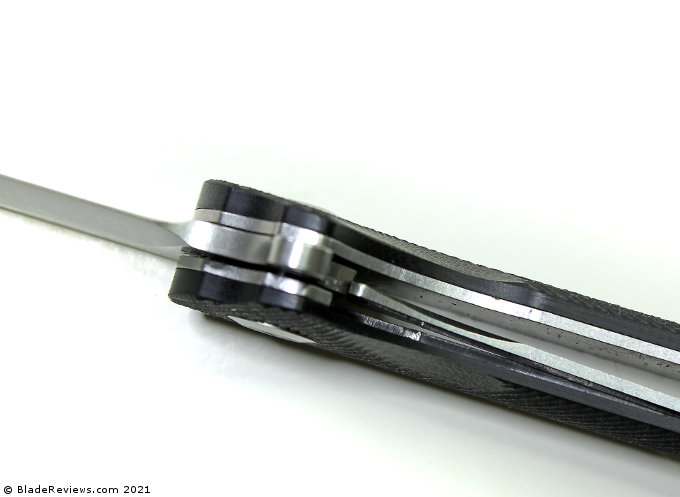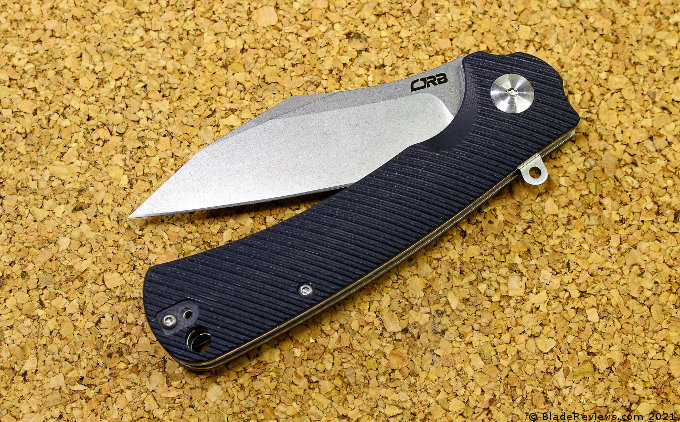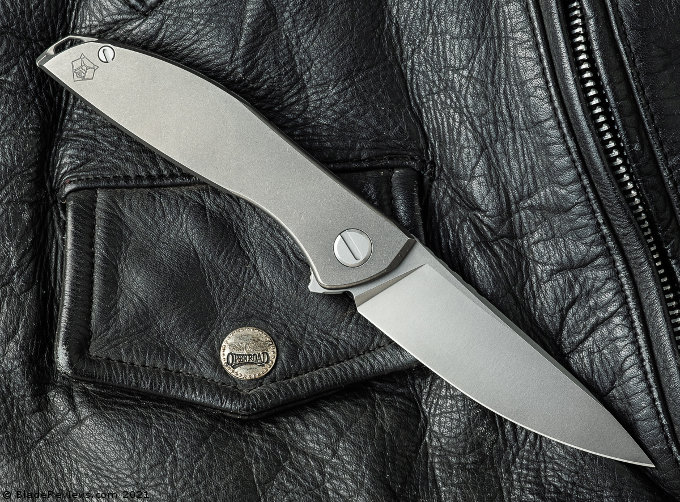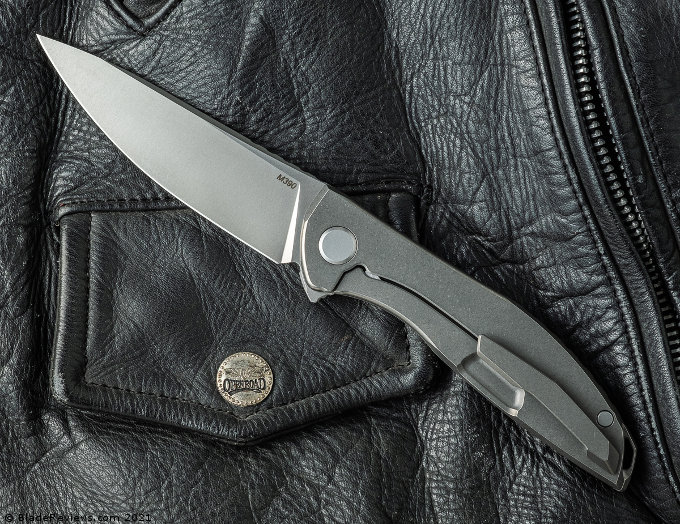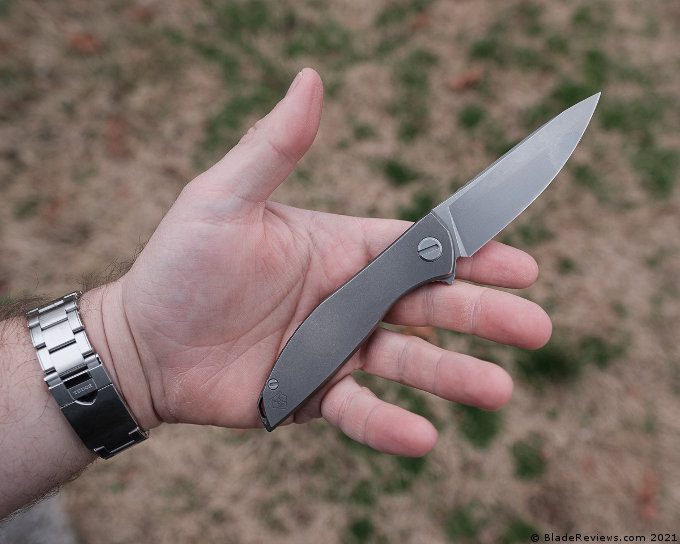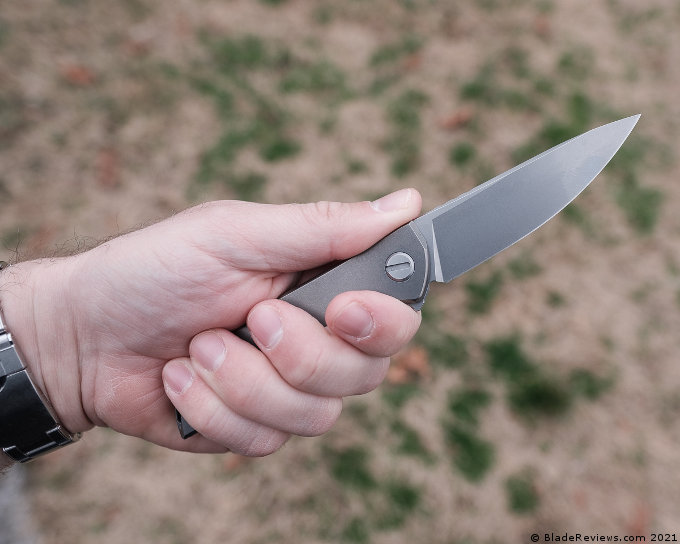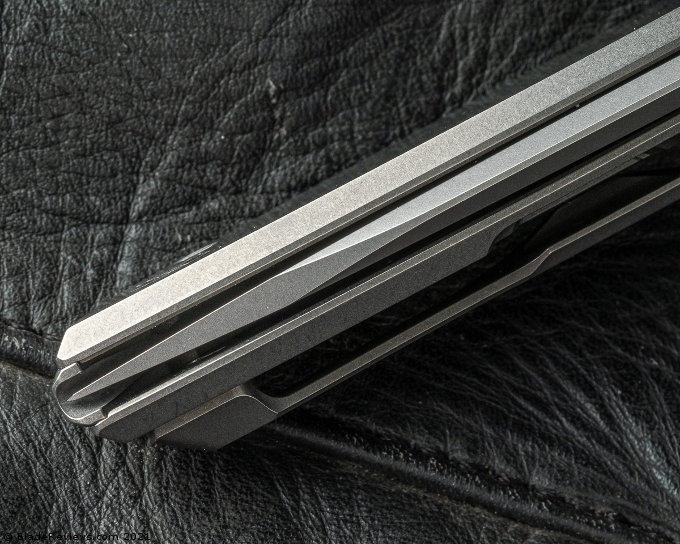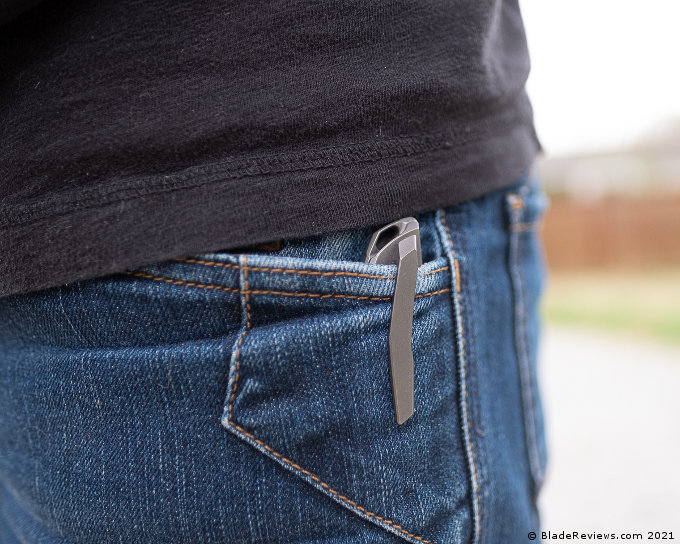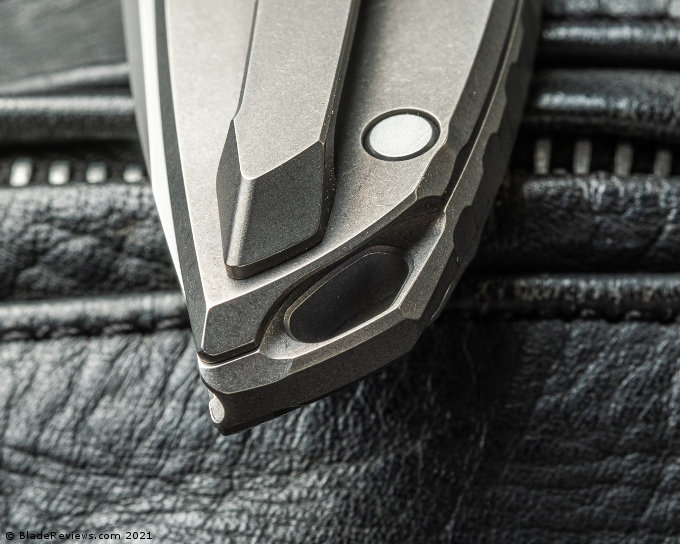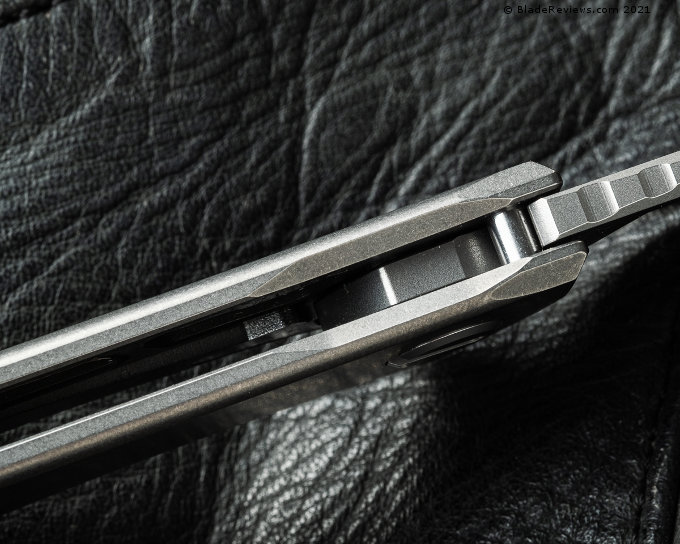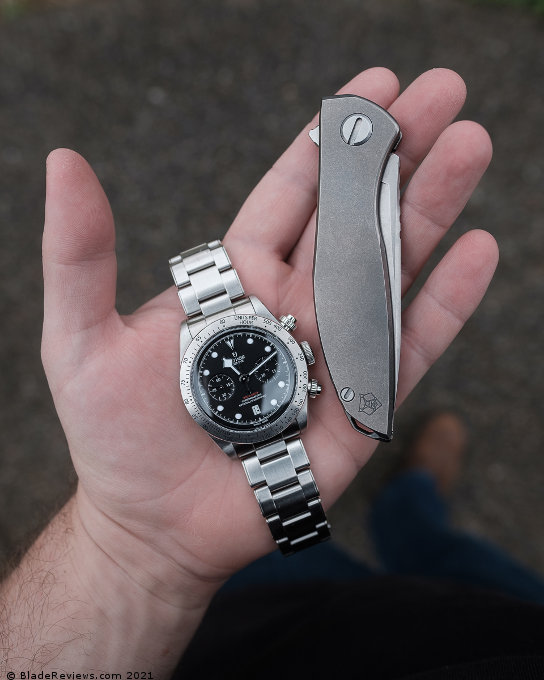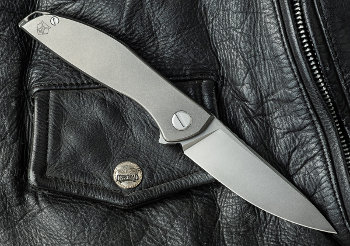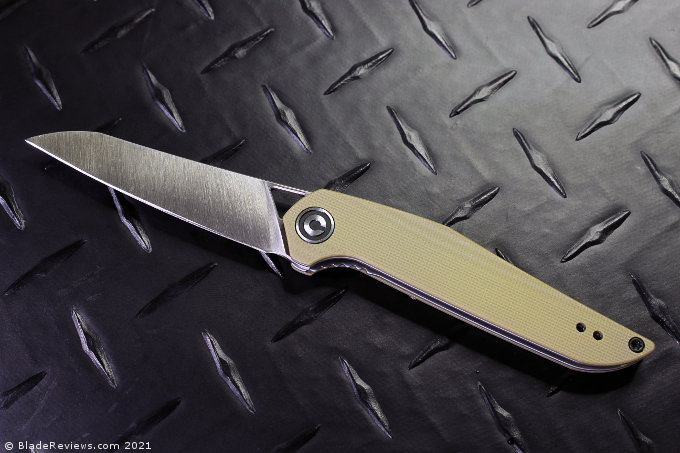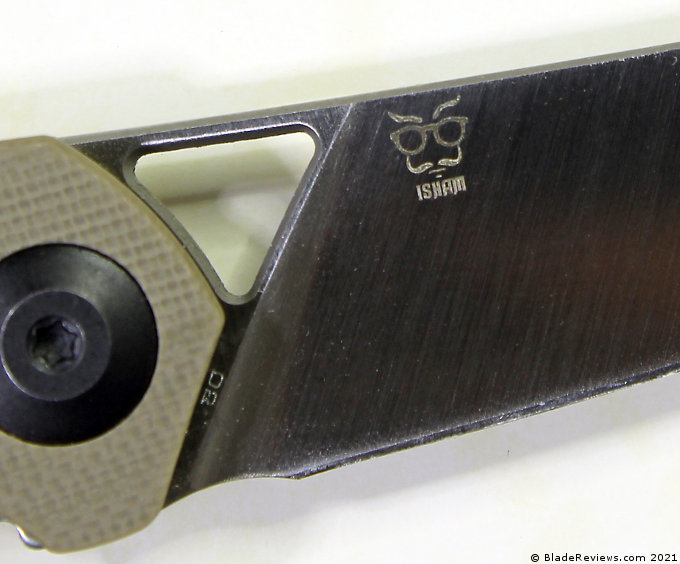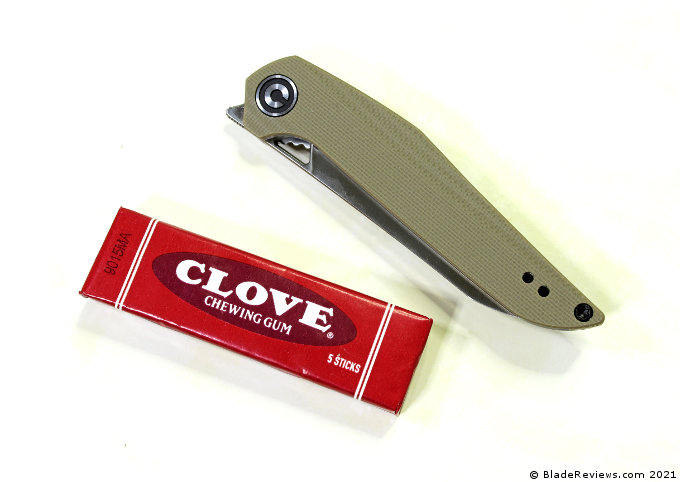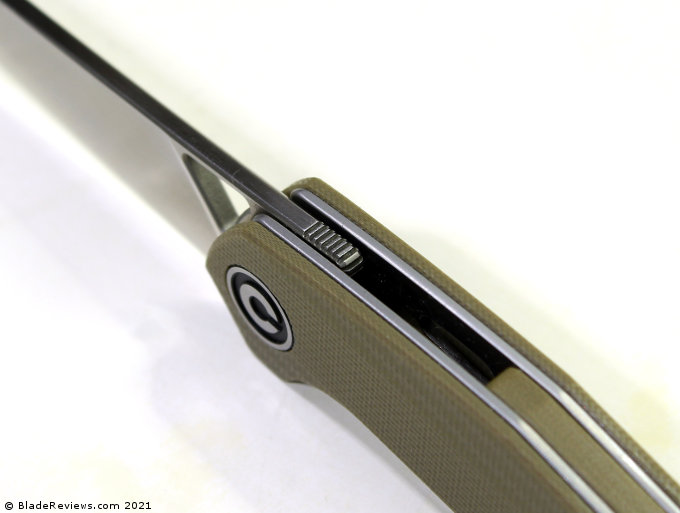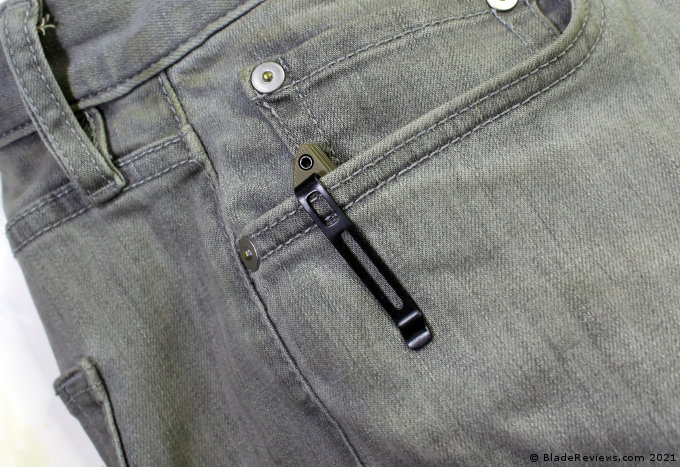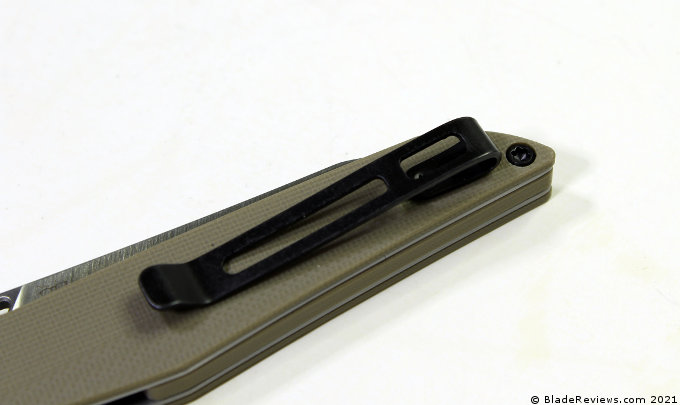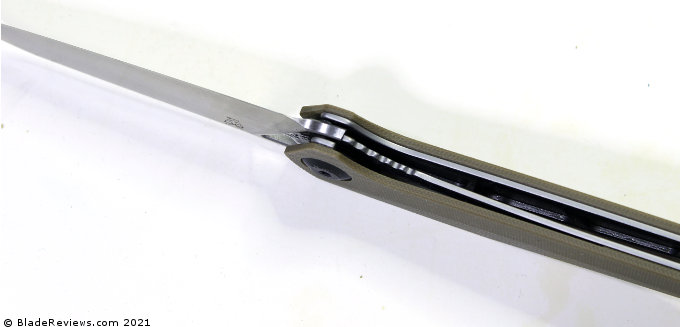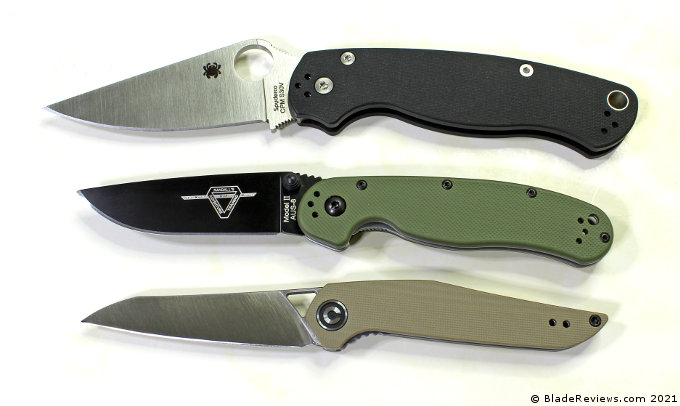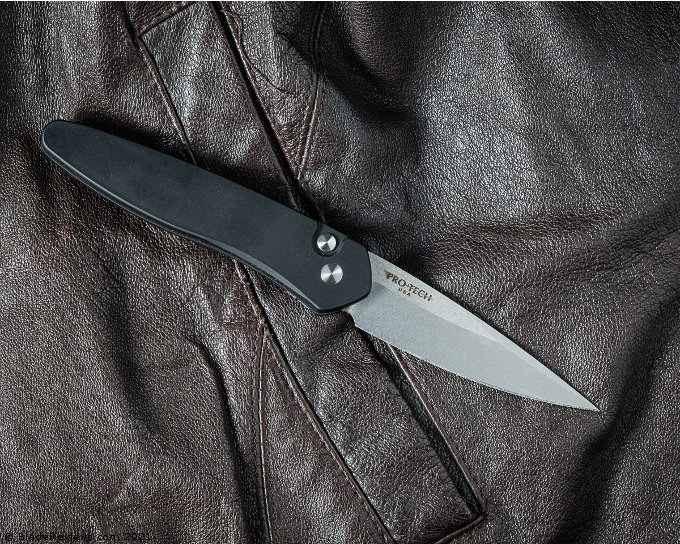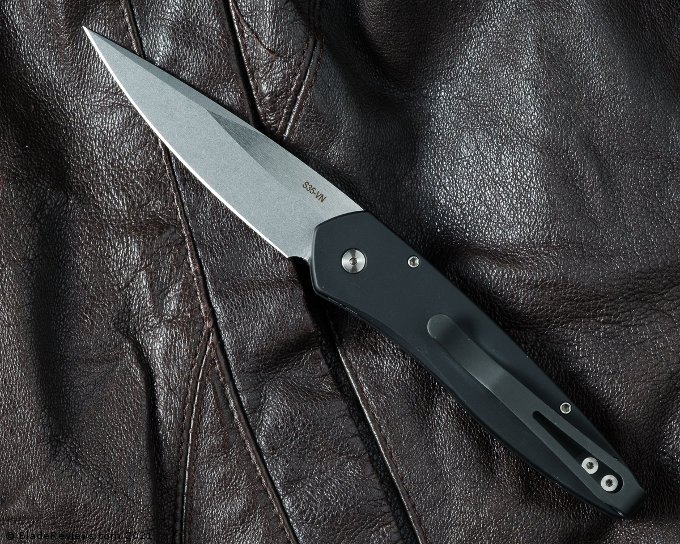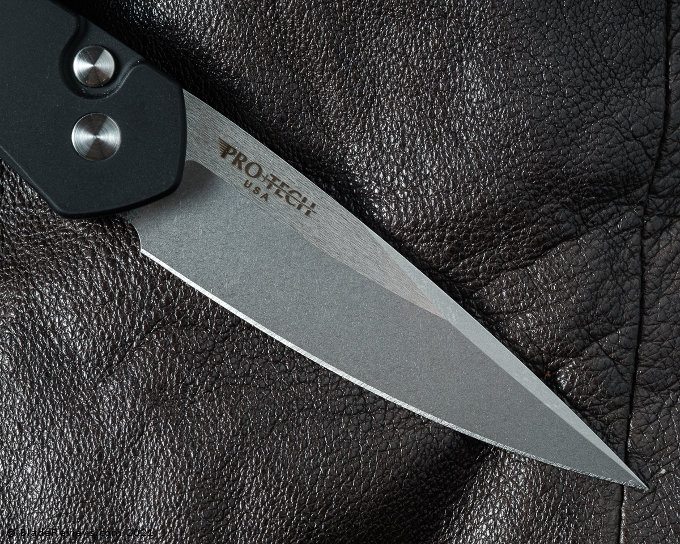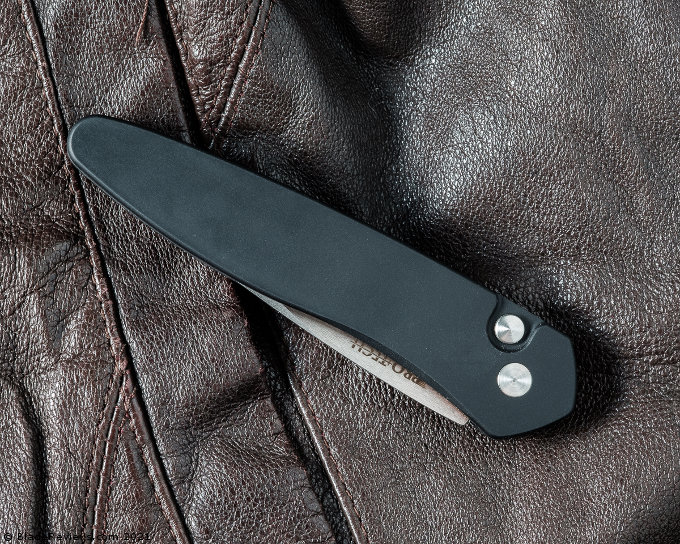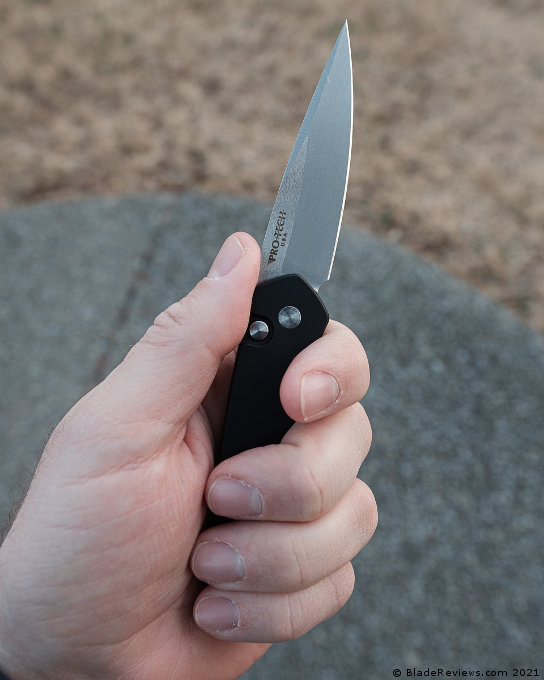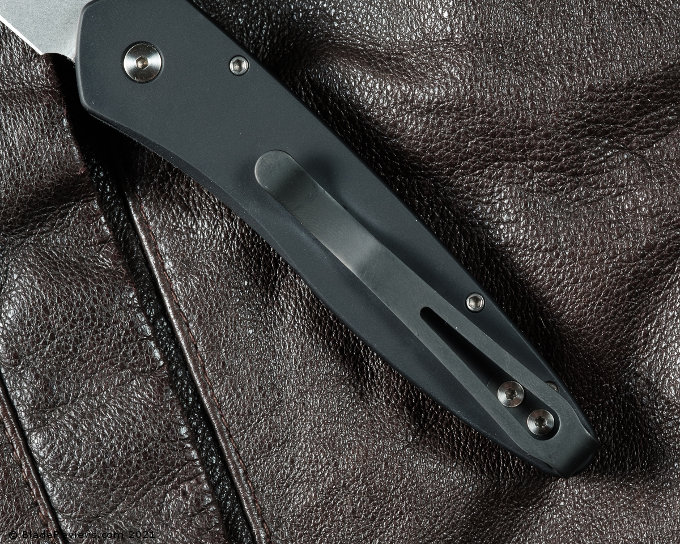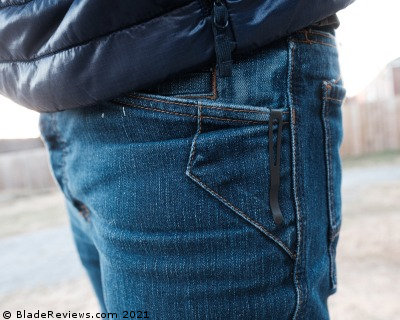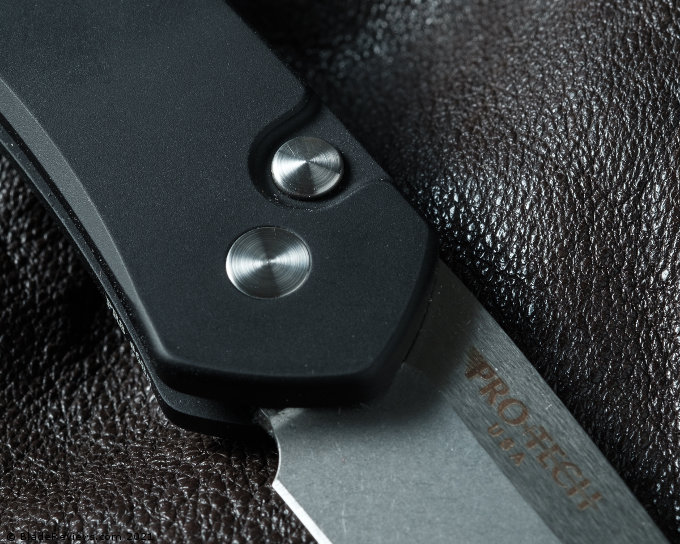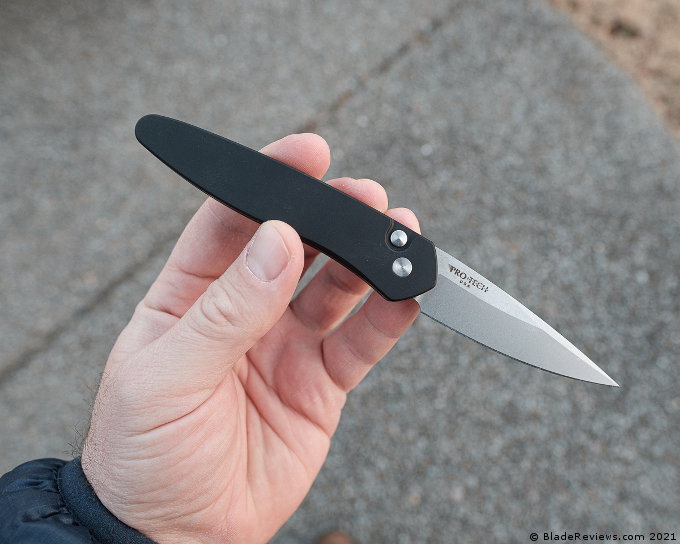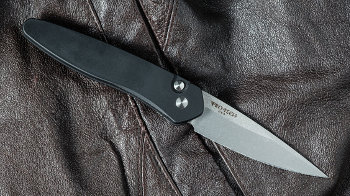I knew I had to have the CRKT CEO as soon as I saw it. A miniature katana blade hiding inside of a package that resembles an elongated cigarette lighter? Sold!
Over the better part of a year and since that impulse buy, I’ve come to appreciate what CRKT’s knife represents, and I’ve additionally come to terms with what it is not. Despite the name and branding, I have my doubts as to whether this is the alpha and the omega of the “gentleman’s knife,” a point I’ll touch on later.
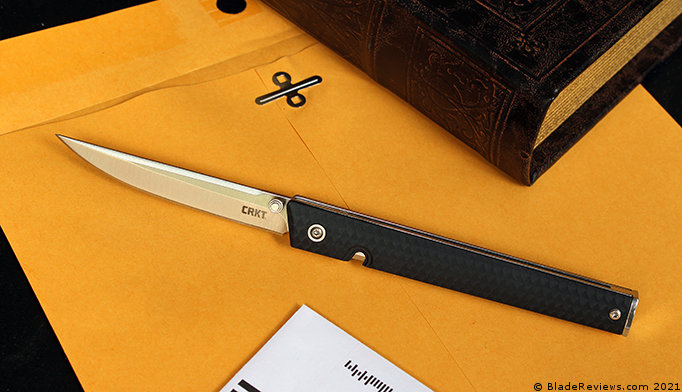
Buy the CRKT CEO at BladeHQ
Buy on Amazon
Suffice it to say that the CRKT CEO offers some good functionality in a small package, and it has the cool factor down in spades. And it’s an office knife par excellence—provided you work in a certain type of office.
General Dimensions and Blade Details
In truth, one of the first things that drew me to the CEO was that you seem to get a lot of blade length for the size of the knife. Here, a 3” cutting edge nestles into a package that’s only about a half inch deep and less than a half inch wide.
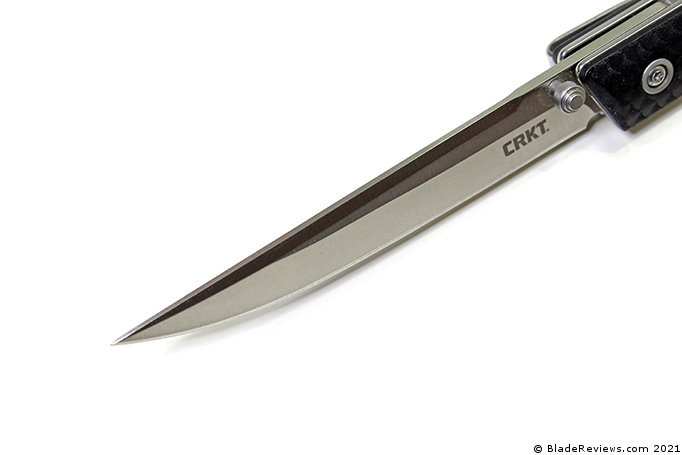
The blade itself is a straight-back style that comes to an adequately pokey tip. At only a half inch at its widest point and 0.09” thick on the dot, the blade of the CEO is great for getting into tight spaces and makes for an excellent slicer. However, do resist the temptation to use this for any prying tasks where you’d have to bear down on anything! The blade length and shape makes this tempting, but it’s easy to see how you’d end up bending the steel or snapping a tip.
Blade steel is 8Cr13MoV, which probably won’t blow anyone’s socks off but is expected for the price point. From the factory, the CEO came adequately (though perhaps not exceptionally) sharp, which is generally par for what I expect from CRKT. Likely yours may benefit from a few extra passes on a fine-grit ceramic stone to give it a little extra bite.
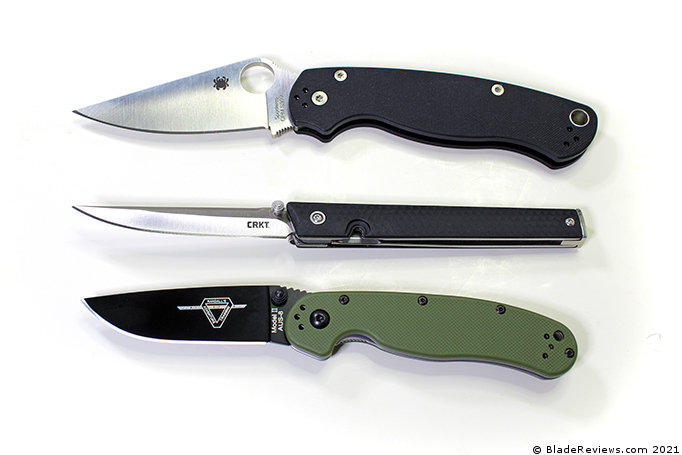
Size-wise, the CEO is definitely going to feel smaller in the pocket than most EDC stalwarts, and it’s also lighter than most popular options at 2.1oz. The CEO is actually a little longer than most knives at just under 4 and a half inches, but the slenderness along the body makes it hard to notice when carried.
Handle, Ergonomics, and Pocket Clip
The “ooooooh” factor is all over this knife. The handle has a very subtle and very cool fishscale texture, and the black nylon inserts are mated to polished stainless hardware that just pops. The handles are nicely rounded, and while the edges of the pocket clip and the butt of the knife have a few edges that are a little square for my liking, they don’t generate any hot spots.
With 4” of handle, the CEO gives you a lot of control. Deployed and in the hand, it feels like a paring knife and could certainly be used for impromptu food prep. Additionally, given the 3” blade length, you’d be able to cut through quite a bit without worrying about getting grease and sauce into the action of the knife.
The clip is non-reversible and tip-up carry only. This is not a lefty-friendly knife given the design of the thumbstud and detent. As a righty, I tried to open the knife with only my left hand as an experiment, and I just couldn’t figure out a good way of doing it without bracing it against my leg. If ambi-friendliness is a desired parameter, the standard version of the CEO is not going to give it to you.
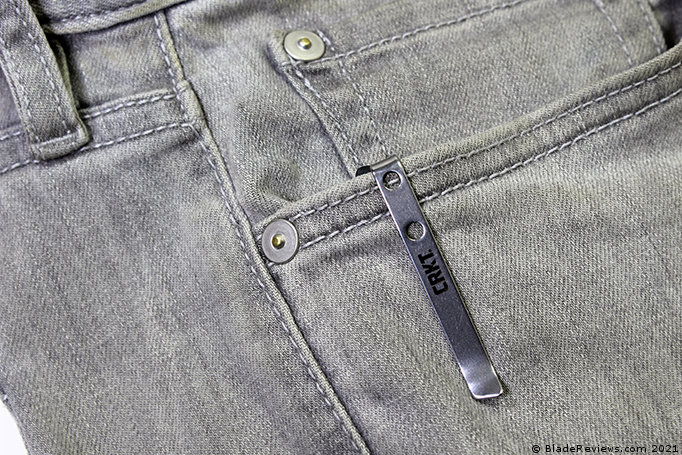
All that said, this would not be my choice for any self-defense related tasks or hard use, and the ergos have much to do with that. While the blade shape might imply decent penetrating power, the lack of any finger guard, texturing, or finger grooves means that it’d be relatively easy for your hand to squirt out in front of the blade if you’re applying force and the tip comes to an abrupt stop. For anything requiring more power to poke through hard material, I’d probably take a reverse grip and put my thumb over the butt of the handle. Or, more likely, employ another knife.
The knife’s limitations might be implied by the name—what business executive is going to be using a knife for hard use or in defense of life and limb?—but suffice it to say I wouldn’t necessarily put the CEO in the category of my own personal EDC given these limitations.
Deployment and Lockup
Be warned: right out of the box, the CEO is going to have a stiff detent. This will eventually work itself out over time to permit a trouble-free deployment, but it’s going to take some time for it to get there. And even once you’re satisfied with it, it’s going to stymie non-knife people. I’d rule out gifting it as a “first” knife for those reasons.
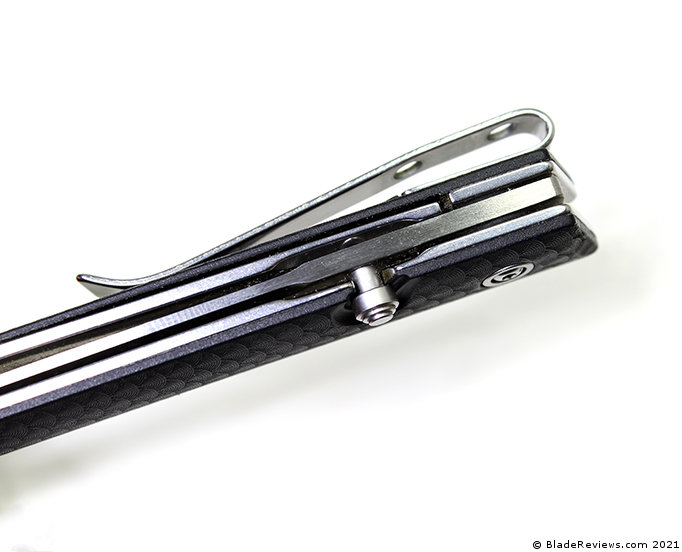
As you can see through the photos, the thumb stud is recessed into the handle and the entirety of the blade is flush or below the liners. These are cool details that I think aid the aesthetic of the knife, but they really only permit one deployment method. Unlike other knives that have some degree of exposed blade spine, you can’t pinch this guy out and into battery. Additionally, the recess means that you can only actuate the thumb stud from one specific direction that’s a little more perpendicular than I’m used to.
Pair those qualities with the detent and it means that deploying this “gentleman’s knife” in mixed company will produce an audible “k-chik!” and draw a quiet room’s attention to the gleaming 3” spike you now hold in your hand. The design of the CEO means that your co-workers are unlikely to identify it as a knife while it sits in your pocket, but they sure as hell will know you have a knife once you deploy it. This is not a grandpa-style Case knife.
Is this something I care about or something that affects my life, personally? No. But if you’re in a big office in a liberal city, I can imagine a situation where your HR department calls you into the office because of a squeamish co-worker and has you explain why you brought your “switchblade” to work. As such, I’d really only recommend the CEO for offices where you’ve got cool co-workers, and even then you might find out a few of them aren’t as cool as you thought.
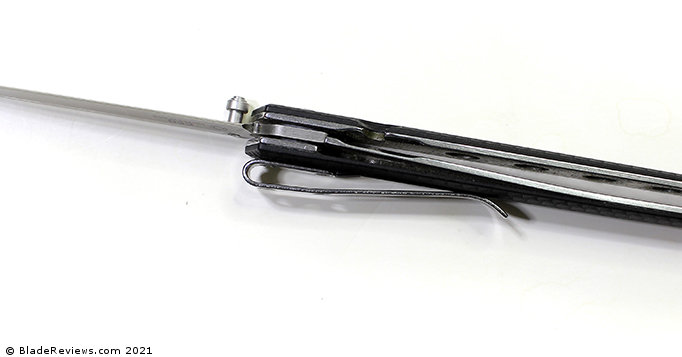
As for lockup: no complaints. The liner firmly and fully engages the well-centered blade with only the barest amount of lateral play, and even then you’ll only notice the wiggle with firm pressure.
CRKT CEO Review – Final Thoughts
I really like the CRKT CEO for what it is. Laying on a desk, people might confuse it for a cigarette lighter, a vape pen, or some kind of futuristic tool. Dimensionally, it’s extremely compact and gives you a nice, slender blade that makes for an excellent slicer. If you crest the learning curve of the thumbstud and work in the detent, deployment is great. I really like how lithe this knife is in the hand, and it’s absolutely the best of my collection for opening letters.
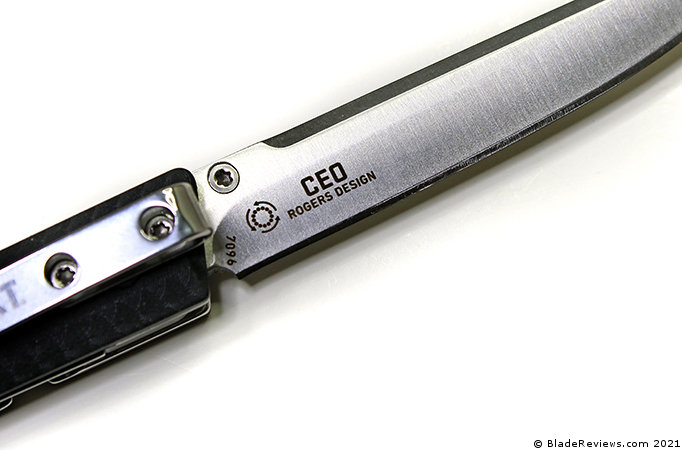
While we’ve looked at the thumbstud-driven version of the CEO today, I wouldn’t throw the baby out with the bathwater if some of the criticisms above seemed like dealbreakers. Those who would desire a quieter deployment method or a more lefty-friendly option might be interested in the tip-up and reversible clip, flipper-actuated version of the CEO.(https://www.bladehq.com/item–CRKT-CEO-Flipper-Liner-Lock-Knife–119358) This would shift a little more balance to functionality over form given the exposed tab, but would otherwise leave the inspired design of the knife mostly unchanged.
Since its introduction, the CEO has expanded into a number of neat colorways and steels, including D2 and S35VN, which indicates it’s been a robust seller and the design continues to turn heads. There’s a lot of value for the price, and it indeed can be an excellent gentleman’s knife in terms of functionality and one’s intended use. Just do keep in mind that the idea of who a gentleman is and what tools he carries may vary widely from one office to the next!
- Low Profile: Slim clip fits comfortably in pocket-
- Fast Opening: Thumbstud with IKBS ball bearing pivot deploys the blade fast
- Strong And Lightweight: Glass-reinforced nylon handle is durable and lightweight
- Designed by Richard Rogers in Magdalena, New Mexico
- Limited Lifetime Warranty covers any defects in materials or workmanship, see company site for details
Editor: I recommend purchasing the CRKT CEO at BladeHQ or Amazon. Thank you for reading.
